Stepped column analysis for determining effective lengths and effective length K factors. These types of columns and configurations are most often used in mill-type buildings involving bridge cranes. While the material is a bit dated, this tool should still prove useful for estimates of required stepped column sizes and configurations.
Program Assumptions and Limitations:
1. This program is based on the following references:
- "Calculation of Effective Lengths and Effective Slenderness Ratios of Stepped Columns" - by: John P. Anderson and James H. Woodward (AISC Engineering Journal, Oct. / 1972, pages 157-166)
- "Calculation of Effective Lengths of Stepped Columns" - by: Krishna M. Agrawal and Andrew P. Stafiej (AISC Engineering Journal, 4th Quarter / 1980, pages 96-105)
- "Calculation of Effective Lengths of Stepped Columns" (Errata) - by: Krishna M. Agrawal and Andrew P. Stafiej (AISC Engineering Journal, Third Quarter / 1981, page 126)
- "Steel Design Guide 7 - Industrial Buildings, Roofs to Anchor Rods" (2nd Edition) - by: James M. Fisher (AISC / 2004, Appendix B, pages 89-98) (Note: does not include errata from Ref. "c".)
2. This program utilizes a simple iterative solution for determining the root, "Z", to each of the characteristic equations shown below, per references "a" and "b" listed above. The program calculates an initial guess (Zst) for "Z", evaluates the expression, increments the value of "Z" by a value equal to the initial guess, and then evaluates the expression again, etc., etc. The results of each pair of evaluation iterations are multiplied times each other to determine the location where the value passes through 0 (changes sign). Per the references, the first (lowest) root is the desired/correct solution to the characteristic equation, although there are multiple roots. Once the pair of iterations have been identified which locate the first (lowest) root, the program performs a linear interpolation between those two values to determine the point where "Z" = 0. The program performs up to a maximum of 4000 iterations to find the correct solution for "Z".
3. This program contains “comment boxes” which contain a wide variety of information including explanations of input or output items, equations used, data tables, etc. (Note: presence of a “comment box” is denoted by a “red triangle” in the upper right-hand corner of a cell. Merely move the mouse pointer to the desired cell to view the contents of that particular "comment box".)
* STEPCOL download link provides freeware version of the software.
Steel Column Base Plate Analysis per AISC 9th Ed
BASEPLT9 is a spreadsheet program written in MS-Excel for the purpose of analysis of steel column base plates.
Beam-Column Design per Aisc 9th Edition ASD Manual
Beam-Column design, focusing on flexural & axial stresses, including built-up sections not classified as plate girders (per AISC 9th Edition ASD Manual)
Effective Span of Plate Girder with no Bearing
The effective span and maximum bearing pressure for a plate girder with no specific bearing is calculated in accordance with BD 56/10 clause 16 and Figure 16. 1A
POLEFDN is a spreadsheet program written in MS-Excel for the purpose of analysis of a pole foundation assuming the use of a rigid round pier which is assumed free at the top and subjected to lateral and vertical loads.
Rectangular Spread Footing Analysis
FOOTINGS is a spreadsheet program written in MS-Excel for the purpose of analysis of rigid rectangular spread footings with up to 8 total piers, and for either uniaxial or biaxial resultant eccentricities.
Submit a review about STEPCOL software with your social media profile

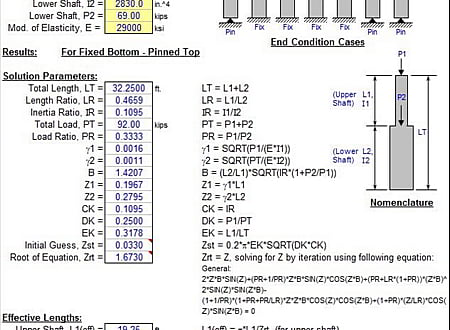
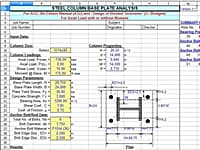
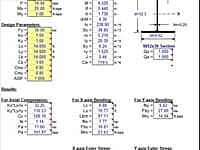
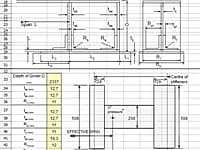
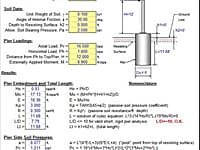
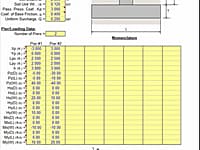
No comments yet. Be the first to comment.